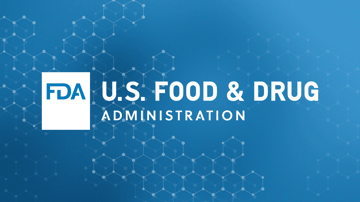Editor’s note: This blog post was originally published on October 19, 2022. We have updated the post to reflect the most recent changes as of December 19, 2024.
This year, 19% of Americans have resolved to "eat healthier", making it the second most popular resolution of 2025, and one that's about to get a little easier to stick to, thanks to the Food and Drug Administration (FDA)'s recently released final rule for "healthy" food claims on packaged foods.
What is the FDA's Definition of “Healthy” for Food Labeling?
Under the rule, products that claim to be “healthy” must contain a certain amount of food from one or more food groups (or subgroups), and for the first time, the rule sets certain limits for added sugars. According to the FDA, the changes outlined in the final rule are being enacted to reflect updated Federal dietary guidance with the end goal of identifying "foods that help consumers build a healthier eating pattern."
Under the new definition, foods with a "healthy" claim must:
-
Contain a certain amount of food from at least one of the food groups or subgroups (such as fruit, vegetables, grains, fat-free and low-fat dairy and protein foods) recommended by the 2020-2025 Dietary Guidelines for Americans
- Meet specific limits for added sugars, saturated fat, and sodium
The criteria for the quantity of food needed from a specific food group (referred to as "food group equivalents") and the precise limits for the three individual nutrients will differ depending on the type of food product and its serving size. The final rule's definition of "healthy" encompasses food groups that offer a variety of nutrients, a departure from past guidelines that focused on a single ingredient in isolation, such as fats.
What Kind of Products Will Qualify as 'Healthy'?
.png?width=898&height=649&name=Examples%20of%20Healthy%20Foods%20(1).png)
Under the new rule, certain nutrient-dense foods without added ingredients — other than water — will qualify for the voluntary "healthy" label. The new definition includes foods previously excluded from the definition of “healthy,” such as nuts and seeds, higher-fat fish (like salmon), water, certain oils, and avocados. These foods are recommended by the 2020-2025 Dietary Guidelines for Americans thanks to their “positive contribution to an overall healthy diet”, according to the FDA. Some examples of these foods include:
- Fresh whole fruits & vegetables
- Frozen, chopped, dried, or canned fruits & vegetables
- Salmon
- Trail mix with nuts and dried fruits
- Plain low-fat or fat-free yogurt
- 100% Olive oil
- Eggs
- Beans
- Lentils
- Water
What Kind of Products Will No Longer Qualify as 'Healthy'?
The FDA also listed some foods that will no longer qualify under the new definition, such as white bread, highly sweetened yogurt, and highly sweetened cereal. Preciously, some foods could be labeled with a "healthy" claim if they were fortified with vitamins or minerals, even if they were otherwise high in unhealthy components. Some examples of foods that originally qualified but no longer will include:
- Yogurt that is high in added sugars
- Fortified breakfast cereal that is high in added sugars
- Fortified white bread with no whole grains
- Fruit snacks that are high in added sugars
- Snack bars that are high in added sugars
- Fortified fruit punch (not 100% juice)
For a more complete list of criteria, sample foods, and a better understanding of the major provisions of the changes the FDA is enacting, head to the Federal Register to read the full text of the final rule.
The use of the term “healthy” is voluntary, but these new guidelines would place stricter limits on its use if the ruling is finalized. The initial definition of “healthy” for labeling was created in 1994, but dietary guidelines have changed significantly since then. In 2016, the FDA notified state agencies that it would “exercise enforcement discretion” for products labeled “healthy” until the word could be re-defined, and it has since collected public comments and information on the use of the term. As with many government decisions, the new proposed definition of “healthy” has been years in the making.
What Else is Included in theFDA's Final 'Healthy' Claim Rule?
While the FDA is looking to redefine “healthy,” it has simultaneously been looking for a better way to communicate to consumers through food labeling and symbols. Over the past couple years, the FDA has been seeking comments on a “healthy symbol” that can help consumers quickly identify nutrient-rich foods when shopping. As the FDA explains: “Symbols may be particularly helpful for those with lower nutrition knowledge to identify foods that can be the foundation of a healthy eating pattern.”
The FDA first proposed a healthy symbol in May 2021 and issued a second notice in March 2022. While the FDA has yet to finalize the symbol, the current proposal to redefine “healthy” could spur efforts to create a “healthy symbol,” as well. But, as with all government proposals, the public will be given a window to submit comments before a ruling is finalized.
When Will the 'Healthy' Definition Change?
The final rule will be put into effect on February 25, 2025, and companies must comply with these new labeling requirements by February 25, 2028.
If you need help navigating the change, Trustwell can help. Contact us today to learn more about leveraging Genesis Foods to streamline compliant label creation or to get in touch with our team of expert regulatory consultants for a compliance solution tailored to your organization's unique needs.
Tag(s):
FDA
Other posts you might be interested in
View All Posts
Food Safety
5 min read
| September 7, 2022
COUNTDOWN TO FSMA 204: Final Rule Will Be Here In 2 Months
Read More
Traceability
6 min read
| January 29, 2021
Gearing up for Traceability 2.0 with FSMA
Read More.jpg?length=360&name=FSMA%20204_Banner_Melons%20(1).jpg)
Industry Regulations
10 min read
| November 11, 2022

